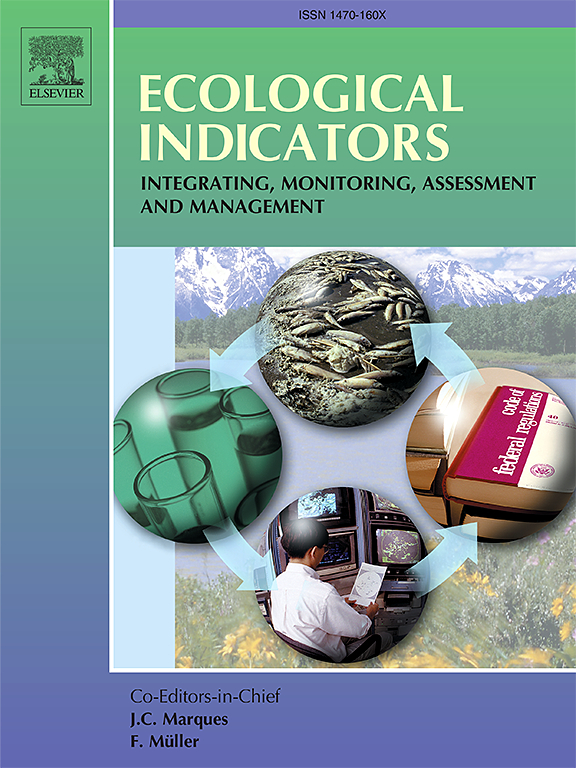The Great Vasyugan Mire of western Siberia: Hydrochemistry and greenhouse gas dynamics of peatland pools of the world’s largest mire
IF 7
2区 环境科学与生态学
Q1 ENVIRONMENTAL SCIENCES
引用次数: 0
Abstract
Siberian peatlands act as the primary regulator for carbon (C) exchange between land and atmosphere; however, the aquatic component of this ecosystem, peatland pools, remains virtually unknown with respect to biogeochemical parameters and C fluxes. Here we report results from a ‘snapshot’ (end of spring period) study investigating hydrochemical parameters and greenhouse gas (CO2 and CH4) concentrations and emissions from shallow peatland pools of the Great Vasyugan Mire (GVM) in western Siberia. The pools were highly oligotrophic, acidic, humic, iron-rich, poor in chloride and sulfate, and emitted 0.15 g C-CO2 m−2 d-1 as measured by floating chambers. There was significant dependence between the pool area and various hydrochemical parameters across wide range of pool sizes (from 700 to 1,380,000 m2). Concentrations of CO2, CH4, dissolved organic carbon (DOC), some organic nutrients and lithogenic trace elements increased with decreasing pool size, likely reflecting organic matter delivery from peat and shallow subsurface waters. In contrast, with increasing pool size, there was a decrease in DOC aromaticity and an increase in pH and concentration of labile elements (anions, alkaline and alkaline-earth metals). This was consistent with an increase in autochthonous production and degree of connection to groundwater reservoirs. Annual emissions of C from peatland pools and lakes of the GVM are comparable to peat growth rate in the territory and exceed the lateral export of DOC by rivers. Future studies should address the seasonal aspects of C biogeochemistry, including the ice cover period.

求助全文
约1分钟内获得全文
求助全文
来源期刊

Ecological Indicators
环境科学-环境科学
CiteScore
11.80
自引率
8.70%
发文量
1163
审稿时长
78 days
期刊介绍:
The ultimate aim of Ecological Indicators is to integrate the monitoring and assessment of ecological and environmental indicators with management practices. The journal provides a forum for the discussion of the applied scientific development and review of traditional indicator approaches as well as for theoretical, modelling and quantitative applications such as index development. Research into the following areas will be published.
• All aspects of ecological and environmental indicators and indices.
• New indicators, and new approaches and methods for indicator development, testing and use.
• Development and modelling of indices, e.g. application of indicator suites across multiple scales and resources.
• Analysis and research of resource, system- and scale-specific indicators.
• Methods for integration of social and other valuation metrics for the production of scientifically rigorous and politically-relevant assessments using indicator-based monitoring and assessment programs.
• How research indicators can be transformed into direct application for management purposes.
• Broader assessment objectives and methods, e.g. biodiversity, biological integrity, and sustainability, through the use of indicators.
• Resource-specific indicators such as landscape, agroecosystems, forests, wetlands, etc.
 求助内容:
求助内容: 应助结果提醒方式:
应助结果提醒方式:


